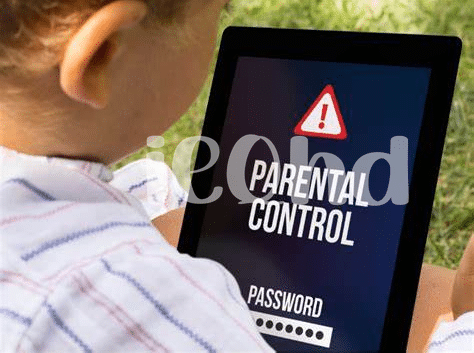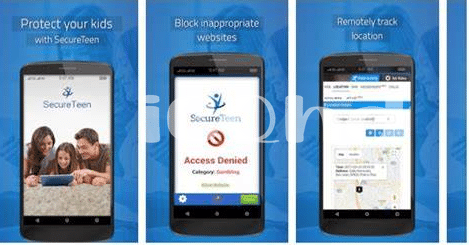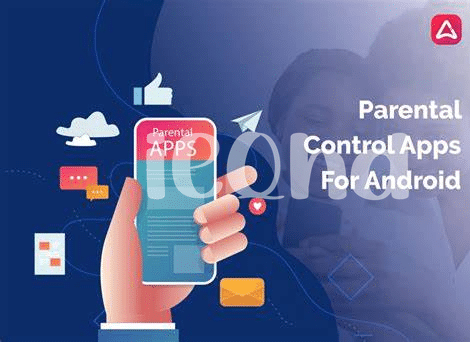- 📱 Embracing the Digital Age Responsibly
- 🛡️ Comparing Top Android Parental Apps
- 🚸 Setting Boundaries: Features That Matter
- 🤓 Ease of Use for Non-tech-savvy Parents
- 💬 Communication Tools: Beyond the Blocks
- 🌟 Finding Balance: Tailoring Individual Needs
Table of Contents
Toggle📱 Embracing the Digital Age Responsibly
As we step into a world where little fingers slide over screens before they grip crayons, guiding our children through the maze of the digital realm becomes a mission crucial to their growth and safety. The truth is, the digital frontier is as vast as it is impressive, but it teems with not just knowledge and wonder, but also with pitfalls and perils that our young explorers may be ill-equipped to handle alone. It’s not just about what they can stumble upon, but also about how much time they spend with eyes fixed on screens, missing out on the vital, real-world play and learning.
As guardians of these pint-size pioneers, we bear the torch to illuminate the good paths and mark the hazardous ones. In this pursuit, technology serves as both the map and the compass. Parental control apps on Android devices have become modern-day sentinels, but it’s not enough to block and restrict—it’s about teaching our kids to use these powerful tools wisely, to kindle curiosity while shielding innocence. We look for apps that foster productive habits, encourage educational content, and protect their young minds from content that’s too mature.
But which features precisely should one demand from a digital guardian? At the heart of it all lies the essence of adaptation—a system that grows with your child, understanding that what’s suitable for a seven-year-old might not hold for a teen itching for independence. Here’s a simple guide:
| Features | Ideal for Age | Why It’s Important |
| ——– | ———– | —————— |
| Content Filtering | 3-10 years | Keeps young eyes away from adult content. |
| Screen Time Management | All ages | Ensures time for offline play and study. |
| App Management | 7-17 years | Allows age-appropriate app usage. |
| Location Tracking | All ages | Adds peace of mind for parents when kids are out. |
| Social Media Monitoring | 13+ years | Helps guard against cyberbullying and online predators. |
Within the embrace of digitalization, the use of these tools is less about control and more about empowering responsible, aware digital citizens. It’s the fine line between guiding them and hindering them, an act as delicate as it is essential to their upbringing.
🛡️ Comparing Top Android Parental Apps
Walking through the virtual aisles of parental control options can feel like a maze of promises and features. It’s a world where safety meets digital sophistication. Imagine an app as a trusty sidekick, one that helps you steer your kids clear of the web’s murky waters without stifling their curiosity. With numerous apps vying for the title of your family’s digital guardian, each brings something unique to the table. Some pride themselves on their impenetrable filters, others boast accurate location-tracking, and a few merge these with time management tools. The trick is to find one that doesn’t require you to be a tech wizard to keep things under control.
As you compare the choices, think not just about what they block, but also how they teach. The best apps out there understand that communication is key. They’ll let you set talk-time limits and monitor contacts, ensuring that your children can reach out to the world, but not without your know-how. And speaking of staying informed, perhaps you’ve pondered over locking certain apps with a gaze as tight as your family bond. For insights on the latest, head over to what is the best eye lock app for android 2024 top 5 apps updated and discover how a simple look can keep your child’s digital experience within sight, yet safely out of reach. Remember, while technology grows at breakneck speed, it’s your guidance that will keep it on a leash—friendly, yet firm.
🚸 Setting Boundaries: Features That Matter
When it comes to giving our kids a smartphone, it’s like handing them a key to a vast city; there are places we’d rather they didn’t visit. That’s where parental control apps come into play, acting as a digital guardian. 🛠️ Key features you’ll want to look for include screen time management, which lets you set a daily limit on the time your child can spend on their device. It’s a way to make sure they don’t spend all day glued to the screen. Content filters are also crucial, working like a filter for the city’s water, keeping out what isn’t healthy for their minds—whether that’s violent games or inappropriate websites. App controls take it a notch higher, allowing you to block or approve apps, putting you in the driver’s seat of the apps that can influence them. Location tracking can be a lifeline, quite literally. It’s like having a radar that constantly shows you where your little ones are in this vast digital city. 📍 But let’s not forget about that one function that acts as an emergency brake: the ability to lock the device. It gives you the comfort of knowing that you can stop the digital train if it’s going too fast for your child’s own good. With these features, you’re setting up fences in the right places: high enough to keep your kids safe, but with gates they can learn to use responsibly as they grow. Remember, the goal isn’t to shelter them completely, but to prepare them for the digital roads they’ll one day navigate on their own. These boundary-setting features won’t just keep them safe today, they’ll teach them how to stay safe tomorrow. 🚦
🤓 Ease of Use for Non-tech-savvy Parents
Understanding new technology can feel like learning a whole new language, but don’t worry, keeping your children safe doesn’t require a degree in computer science. The best parental control apps released in 2024 have been designed with you in mind. They’re straightforward with clear instructions and helpful tutorials to guide you at every step. Without needing to call up your tech-savvy nephew, you can easily navigate through the settings to manage your child’s screen time or review their app usage. These tools are turning complexities into simplicities, ensuring the digital wellbeing of your young ones is just a few taps away.
Now, while it’s fabulous that these apps are user-friendly, they’re also quite clever. They’re the invisible digital assistants that help you maintain your child’s safety without constant peering over their shoulders. Some features even include beneficial content that teaches good online habits. And when it comes to security, it’s smart to also consider the eyes-only access for your peace of mind. You might be asking, “what is the best eye lock app for android 2024 top 5 apps updated?” That way, you can keep your settings inaccessible to everyone but you, combining ease of use with cutting-edge security.
💬 Communication Tools: Beyond the Blocks
When we give our kids a phone, it’s like we’re opening a doorway to a vast, bustling city. It’s filled with incredible sights and experiences, but just like any city, it can have its share of risks. That’s where the right parental control apps come in—not just as gatekeepers but as guides that help us communicate with our little explorers. These apps are more than just barriers; they’re like walkie-talkies, ensuring that parents and kids stay on the same channel. Some apps include clever messaging features letting us send a loving “good morning” or a gentle reminder that it’s time to put the phone down. And for times when we can’t talk, we can use these apps to let our kids know we’re thinking of them with automated messages during the day.
Yet it’s vital that these tools also encourage an open dialogue about responsible phone use—after all, education is a key part of safety. Important features may include activity reports and alerts, fostering conversations about time spent on different apps or websites. This openness transforms rules into lessons, teaching kids to navigate their digital streets wisely. Here’s a peek at how some apps help us keep the lines open between heart emojis and homework alerts:
| App Name | Messaging Features | Customizable Alerts |
|---|---|---|
| KidGuard | Pre-set text messages; Check-in/out notifications | Yes |
| SafeNet | Direct messaging within the app; Send warmth or warnings | Yes |
| GuardianEye | Activity-based alerts to parents and kids; Time limit reminders | Custom schedules and event triggers |
Finding the right blend of supervision and communication can nurture a healthy tech relationship. A world where parents can guide without hovering, and where kids can learn and grow within safe boundaries. It’s all about harnessing tech to build trust and teaching kids to use their digital toolkit with care.
🌟 Finding Balance: Tailoring Individual Needs
Every child is a world of their own, with unique interests, challenges, and strengths. 🌈 In the sea of digital content, it’s essential that the tools we use to protect them are flexible enough to adapt to each child’s individual journey. Think of these apps as a high-quality backpack that you pack for your child’s exploration of the digital world; you wouldn’t fill it with the same things for a mountain hike as you would for a day at the beach. Parental control apps should offer a variety of settings, allowing you to adjust filters, time limits, and access to apps and websites according to what’s best for your kid. After all, what works for the social butterfly of the family may not gel with the routines of your night-owl gamer.
The key is to create a digital environment where your kids can flourish safely without feeling like their wings are clipped. 🕊️ It’s about guiding them, not guarding them in fear. Because children will eventually fly the nest of parental supervision, these tools also need to equip them with the smarts to make good choices online. Through nurturing dialogue and educational resources within the apps, parents can help kids understand the why behind the rules, fostering trust and maturity. It’s this understanding that helps kids navigate the digital expanse with confidence. Employing parental control apps that emphasize teaching as much as they do monitoring lays the groundwork for a lifetime of responsible digital citizenship.




